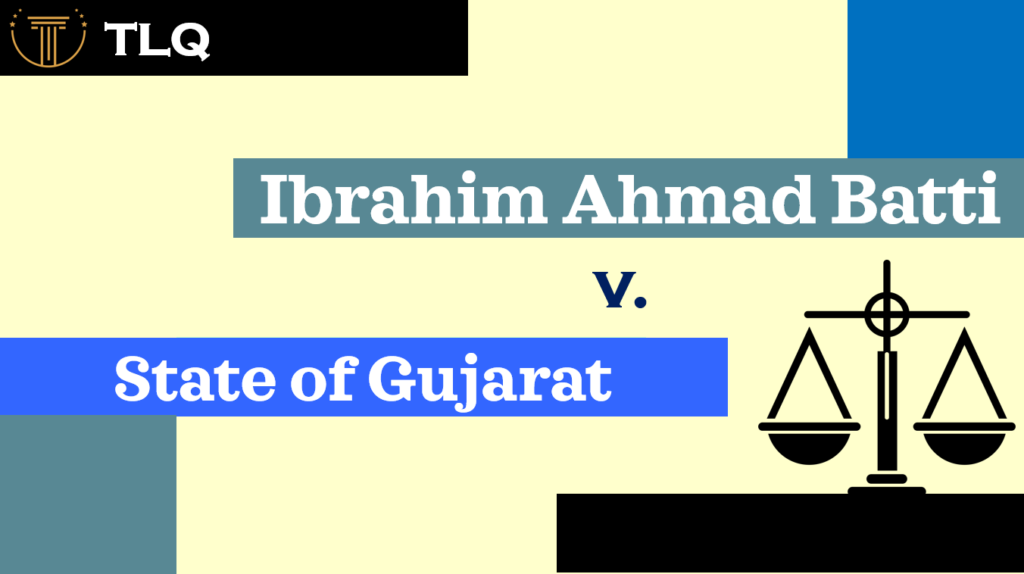Published On: 29th May, 2024

Abstract:
Managing change is a vital component of corporate success in today’s chaotic and highly competitive business world. Research indicates that the pre-reform Indian company executives were unable to maintain the pace of increase in sales and profits. The new economic realities have brought about winds of change that they have not been able to weather. Even the players who have shown a higher percentage of success have not given internationalising their operations any real thought.
This essay examines the potential the New Economic Policy (NEP) presents to Indian corporations, as well as some of their accomplishments and the issues and difficulties they have encountered thus far. It declares that a company’s strategic priority is change. The paper makes the case that in order to build organizational capacity for performance excellence, Indian businesses must make learning and benchmarking investments in a variety of organisational working domains. They should also consider utilizing the empowerment model of human resource management (HRM) strategy as a way of doing business.
Introduction
Business basically refers to an organization, commercial activity, trade, employment profession, or occupation that helps in earning a livelihood and running households. As per the Income Tax Act of 1961, the term business includes any trade, commerce, or manufacture that is run by a person or group of people called the owner.
A person’s legal control over the business is called ownership. Business ownership refers to the control over a business or an entity that holds the rights and responsibilities of the owner of a business or a company.
A business owner is a person who controls the monetary aspects of a business or any entity that deals in the production of sales or the purchase of goods and services. A business can be run by a single person, in partnership with two people, or by a group.
Understanding Business Ownership Transition
A change of ownership results in a change of control for the person who owns or oversees the business or any entity, such that the person loses the ability to control that institution. Ownership changes when a person either sells his business or entity.
A change of ownership results in a change of control for the person who owns or oversees the business or any entity, such that the person loses the ability to control that institution. Ownership changes when a person either sells his business or transfers it to someone else, may it be a family member, a friend, or a new partner in the firm. Since a new person has been added to the firm, updates need to be made. The main reason for the change of ownership is when the company fails to adapt to the changes in the market or does not withstand competition from other companies. Sometimes the companies are not able to recover the loss or reach the break-even point, which eventually leads to the sale of the firm, causing a change in ownership.
Ownership has certain types, which depend on the type of business the owner wants to do. There are certain criteria that need to be fulfilled before finalizing the type of ownership, as the future of any business depends on the selected criteria. To transfer business ownership, create a formal transfer plan, get a business valuation, consult legal and financial experts to help ensure regulatory and tax compliance, and complete the necessary paperwork to formally sign over ownership[1]. Here, are a few types of ownership that are discussed below:
Sole proprietorships:
A sole proprietorship is a non-registered, unincorporated business run by a single owner without distinguishing between the business and the owner. The owner enjoys all the profits of the business but also faces all the losses of the business alone. He pays the personal income tax on profits earned by the business. For example, a corporation (a legal entity) can be the owner of one or more companies. The individual owner (proprietor) of a company operating as a sole proprietorship is referred to as the “sole proprietor.”
For operating a sole proprietorship, you should hold cash worth Rs. 50,000 and some liquid assets. You can take a loan from a bank, family, or friends. Personal funds can also be used. All the taxes are to be paid by the owner alone.
Advantages:
- The greatest advantage is of tax as the income earned belongs to single person only and is subject to single layer of tax only.
- There is no huge paperwork such as registration with state. Before starting a business, you need to get license whose appointment depends on state to state. But less paperwork helps to start the business soon.
- Payment of tax is also easy process as there is no Employee Identification Number (EIN). You can pay tax through Internal Revenue System (IRS).
- You also do not need a business checking account you can transfer or receive money from personal account as well.
Disadvantages:
- It is difficult to get funding to expand the business, as the owner sometimes runs short of capital. Banks also do not give loans easily because they try to support big companies with better records.
- If it’s a company employee, he pays half or some of the amount of the tax from the employer’s portion. A sole proprietor has to pay all the taxes on his own and burden himself.
- Sole proprietorships are risky as they don’t have any business insurance, which could protect them against any harm to the business. They don’t even have managers or assistants who could direct them in expanding business.
- If you close an office for even a single day, you suffer a loss in income as you may lose customers, whereas in companies or group ownership, there is no loss of income as some, or another person can operate the business in the absence of one person.
Partnerships:
A partnership is a legal or formal arrangement of two or more people who join in order to manage or operate a business. Each person is known as a partner, and the entire business is called a partnership firm. All the partners equally share the responsibility of the business and share the workload, profits, and losses incurred. In order to reach an agreement, the parties participating in a partnership must negotiate unique challenges and difficult talks. Generally, partners who want to create enforceable and positive terms for their agreement draft articles of partnership. Trust and pragmatism are also essential as it cannot be expected that everything can be written in the initial partnership agreement, therefore quality governance and clear communication are critical success factors in the long run.[2]
Types Of Partnerships:
- A general partnership is formed just by agreeing with one or more people and without any paperwork. You just need to agree with each other on a written agreement.
- Limited Partnership: In this type of partnership, one partner manages the business while others manage the finances of the business. Registration is required by the state. Partners are responsible for their contribution.
- Limited Liability Partnership (LLP): It is a mix of a general partnership and a limited partnership. Partners co-manage the business and participate in business activities as well. Each partner is liable for his own debt and not for others.
Advantages:
- It is easy to form a partnership as no documentation is required with the state and no annual report or fees are required.
- It is easy to take decisions as there is no system for getting the decisions passed by any senior authority. Partners enjoy their powers and take decisions or perform any transactions on each other’s behalf.
- Partnership firms can easily raise funds as each partner contribute according to their feasibility and even some amount of loan is taken from Bank as well.
Disadvantages:
- Everyone is personally responsible for any loss or liability caused to business. To reduce the loss, liability, and debt, the government launched the LLP system.
- There is no head who could be made a leader in order to pass directions to the business. This happens because partnerships take away the ability to create a leader.
- In the event of death or insolvency, any partner can dissolve the firm. This may lead to disruption of the business, causing ups and downs affecting the working of other partners.
Private Limited Companies:
A Pvt. Ltd. company is a firm, entity, business, or organization run by private ownership. The shares of these companies are not exchanged on public exchanges and cannot be issued through an IPO. The owners of these companies are called shareholders. According to the company act, there is no limitation on the number of employees. Private limited companies have limited liabilities. It provides limited liability protection and separates legal equity status.
Characteristics:
The characteristics of a private limited company in India are as follows:
- Limited Liability Protection: Shareholders of a private limited company are only liable to the extent of their shareholding. This implies that, should the corporation suffer financial difficulties, their assets are safe.
- Separate Legal Entity:A private business and its owners are two different legal entities. t has its legal identity and can own property, enter into contracts, and sue or be sued in its name.
- Minimum Number of Shareholders:A private limited company can have up to 200 shareholders, with two being the minimum number.
- Minimum Number of Directors:A private limited business needs two directors at the very least.
- It is mandatory for at least one director to be an Indian citizen.
Advantages:
- In Pvt. Ltd. companies, you can pay yourself a small amount of salary, out of which you pay the possible amount of personal tax.
- Your income will be in the form of dividends, on which the tax rate is small, which helps you earn more.
- After the amendment of the Companies Act, 2013, a Pvt. Ltd. company can be registered by paying a nominal amount of Rs. 1,00,000 in authorized share capital.
- If the company faces any liability at that time, any personal assets won’t be sold to recover the debts. The members are liable only to the extent of their shareholding.
- 100% foreign investment is allowed, which helps in the national as well as global growth of the company.
Disadvantages:
- It can only have 200 members, whereas a public limited company can have unlimited members.
- Ltd. Company cannot issue prospectuses inviting the public to subscribe to its shares, and the company shares cannot be listed on the stock exchange.
- These companies do not disclose their financial information, which makes it difficult for investors to evaluate their performance before investing.
- Annual filing is an important task, failing which can lead to fines and penalties.
Legal Framework for Changing Business Ownership
The change in Business ownership takes place when a person is unable to cope with his business. This happens when the owner suffers losses or debts, if there are too many liabilities, or if the business material is not updated, i.e., not according to the taste of the public. A change in ownership takes place through an agreement.
The general ownership transfer agreement is called a Business Transfer Agreement (BTA), which is signed between the business owner and buyer stating the sale of the entire business and its assets. The BTA should include certain important things, and those are capital information, customer lists, employer lists, insurance, copyrights, and patents. The agreement should be in writing, and the immediate transfer of property is prohibited.
There are few types of ownership transfer agreement discussed below:
- Purchase and Sale Agreement:
One of the most important legal documents required during the sale of any item, business entity, or company. It presents the conditions on which both parties agreed when the transaction took place. It presents the details of all the transactions that took place between the parties. A few important terms included in the agreements are the purchase price, sale price, closing date, money that the buyer must deposit while signing the deal, and the list of items included in the deal.
The Supreme Court reaffirmed that a sale agreement does not confer any title or transfer ownership rights.Judges Vikram Nath and Rajesh Bindal’s bench noted, “Agreement to Sell is not a conveyance; it does not transfer ownership rights or confer any title.” Consequently, the bench decided that the Karnataka Prevention of Fragmentation Act did not prohibit the sale agreement.[3]
- Shareholders Agreement:
An agreement between the shareholders of the company, protecting both the company or business and the shareholders. It briefs us about the duties and responsibilities of the shareholders towards their company, the decision-making process, and the insurance of shares. It also tells us about the management of the company, which makes it easier for investors to invest.
Shareholders agreement lay down clearly defined rights and obligations between the parties, i.e., (a) appointment of directors and quorum requirements; (b) determining the matters requiring special resolution of providing veto rights to certain shareholders (more so in case of private equity).[4]
- Partnership Agreement:
A legal document is used as a guide for running the business and to know the relationship between each partner of the firm. It also helps to place the capital, assets, skills, and labor of partners in the business and also states that there will be equal sharing of all the profits and losses in the firm. Making an agreement is voluntary; it depends on the partners if they want the terms and conditions in writing or not. But it will be beneficial if the document is in writing, as it can help in solving any future conflict.
The basic elements of a partnership agreement include the name of the business and partners, their phone number, and the and the purpose of the business. Capital contributed, and in what ratio will the profits and losses be divided among the partners?
According to Sec 13 of the Partnership Act, 1932, the mutual agency exists between the partners. Every partner in a partnership act as a principal as well as an agent for other partners. The actions of a partner are binding on the actions of all the other partners.
Problems & Challenges Being faced:
Despite positive indicators, there’s room for significant growth. India’s IT sector, for example, holds only a 1% share of the global market, and agriculture employs a vast majority (two-thirds) of the workforce while remaining underdeveloped. There’s a lack of a coordinated skill development framework to address the changing needs of industries.
Indian companies need to become global brands. While some, like Usha Martin, excel in specific areas, they haven’t gained international recognition. Even successful IT companies struggle to secure contracts for complex projects.
The performance of pre-reform era corporate leaders is declining. A study reveals a significant drop in profitability, with many companies failing to adapt to the post-reform business environment.
Indian companies lack the belief they can succeed globally. They are aware of the challenges but remain stuck in an “incremental mindset” rather than adopting a more proactive approach. While there are success stories, they often go unnoticed.
Overcoming these challenges requires a shift in perspective. Indian companies need to move beyond traditional “tried and tested” solutions and embrace new models. The focus should be on building intangibles like shared mindsets, talent, speed, and leadership, which are crucial for long-term success in today’s unpredictable market.
Intangibles are the new drivers of market value. Research by Baruch Lev highlights the increasing importance of intangibles in determining a company’s stock price. Companies like General Electric, under Jack Welch’s leadership, demonstrate the power of building trust and delivering on promises to create value.
Investing in intangibles builds confidence for the future. Ulrich and Smallwood propose a framework for building intangibles, including delivering predictable earnings, articulating a growth vision, ensuring future competencies, and creating capabilities like performance culture and collaboration.
Building future competencies is critical. Leaders like N. R. Narayana Murthy of Infosys prioritize creating a sense of purpose within the company, focusing on employee development and core organizational processes. This approach has helped them achieve global standards.
Companies like Ranbaxy and Wipro demonstrate successful adaptation. The new business environment demands a shift from rigid strategies to a more emergent approach, as described by Mintzberg. Vision and values need to be instilled at all levels, not just remain part of top-level strategy.
Individualized strategies are key to competitive advantage. Ghoshal and Bartlett emphasize the importance of individualization in successful global companies. The Indian corporate sector needs to invest in people-centric capacity building to leverage this concept.
Attitudinal problems plague Indian businesses. These include lack of global ambition, professionalism, and customer focus, alongside issues like outdated technology and inadequate skill development. Hierarchical structures and caste dynamics further hinder progress.
Great organizations invest in building a “great place to work” culture. This approach attracts and retains top talent, unlike the overly managed and poorly led structures prevalent in many sick Indian companies.
Conclusion:
This article explores the challenges and opportunities faced by Indian businesses in the era of globalization.
India’s economic performance has improved with an average GDP growth rate of 6% post-liberalization, compared to the earlier “Hindu rate of growth” of 3-4%. However, many established companies haven’t adapted, while new entrepreneurs are emerging. The influx of multinational corporations (MNCs) has increased competition and exposure to better management practices.
Barriers to achieving world-class status remain. Decades of protectionist policies fostered mindsets of complacency and resistance to change in both public and private sectors. Indian companies need to be more proactive in managing change dynamics.
Leadership and people management are crucial for success. Studies show only 20-25% of global companies sustain long-term change management strategies. Indian companies, accustomed to closed systems, need a significant shift.
Effective people management should be a top priority. This includes:
- Leadership development: Equipping leaders to navigate change and inspire employees.
- Core values and governance: Establishing and upholding ethical principles within the organization.
- Learning culture: Encouraging continuous learning, benchmarking against best practices, and fostering innovation.
- Proactive HR strategy: Shifting from reactive approaches to empowering employees through creating ideal workplaces.
The future of HR in India:
- HR as strategic partner: HR professionals will play a key role in organizational transformation.
- Investment in people: As the economy grows, companies will invest more in employee development and well-being.
- Empowerment model of HR: This ambitious agenda requires significant cultural and economic changes. While challenging, the success of the Indian services industry demonstrates its potential.
The article emphasizes the urgency of change. By actively managing change and adopting a people-centric approach, Indian companies can accelerate their progress towards becoming world-class players.
Reference(s):
[1] https://www.westernsouthern.com/personal-finance/how-to-transfer-business-ownership#:~:text=To%20transfer%20business%20ownership%2C%20create,to%20formally%20sign%20over%20ownership.
[2] https://en.wikipedia.org/wiki/Partnership
[3] https://www.livelaw.in/top-stories/agreement-to-sell-doesnt-transfer-ownership-rights-or-confer-title-supreme-court-242274#:~:text=The%20Supreme%20Court%20reiterated%20that,Vikram%20Nath%20and%20Rajesh%20Bindal.





